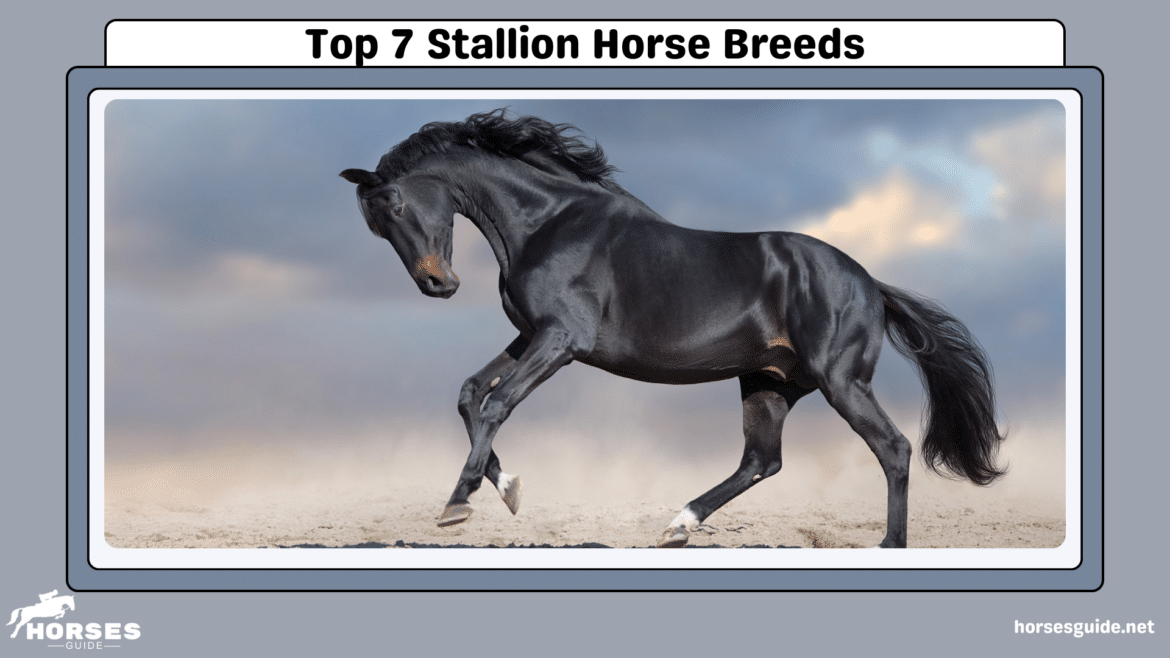Table of Contents
Stallion horses stand out in the world of equestrian excellence due to their captivating charisma and unique qualities. Let me tell you one thing: apart from possessing a commanding presence, a stallion horse is not just any other normal breed; in fact, it shapes the future of equine breeds. These horses are those male companions that have not been castrated and play a pivotal role in reproduction. In the breeding world, the stallions are known as Studs, and once they become father, they are referred to as “Sires.” Now, every horse lover must know the unique traits and most common breeds of stallion horses, which we will discuss in this article. Let’s explore the guide to these majestic creatures.
Arabian Stallion Horse
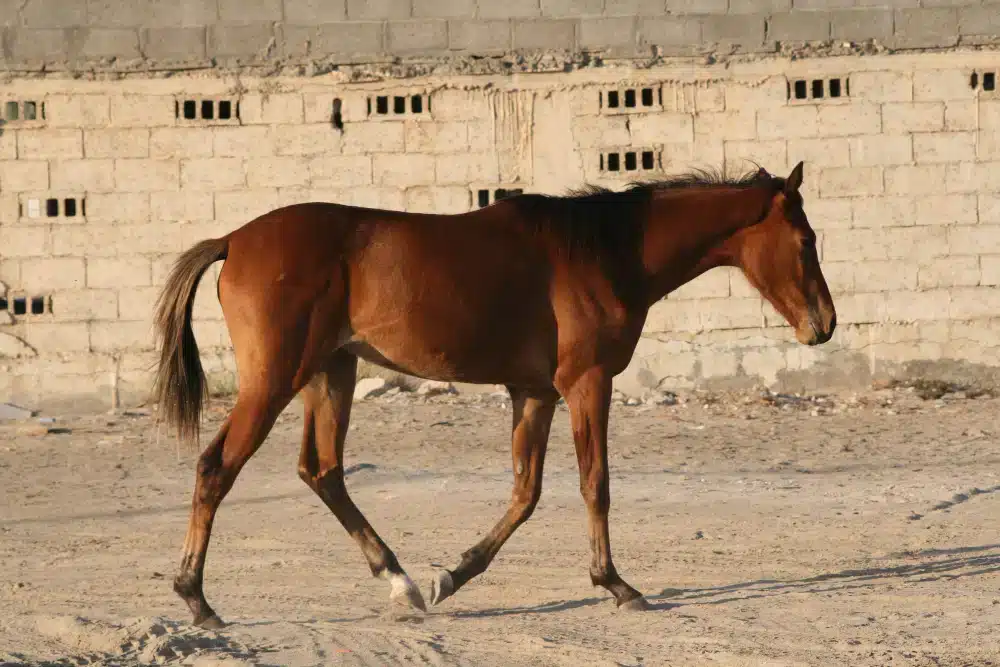
You might want to get this horse due to their striking beauty and stamina. Arabian horse makes a great stallion fellow.
Overview
One of the most ancient and well-known horse breeds in the world is the Arabian. Arabians are distinguished by their unique head shape, high tail carriage, and elegant form. These white stallion horse breeds are prized for their endurance, stamina, and attractiveness.
Key Characteristics
- Size: 14.1 to 15.1 hands
- Shade: Black, gray, chestnut, and bay
- Temperament: Perceptive, energetic, and enthusiastic
Pros
- Outstanding stamina and endurance
- Stunning, unique appearance
- Adaptable to many equestrian disciplines
Cons
- Might be sensitive and easily agitated, which could influence horse behavior
- Necessitates skilled handling
- Could be vulnerable to specific genetic illnesses
Clydesdale Stallion Horse
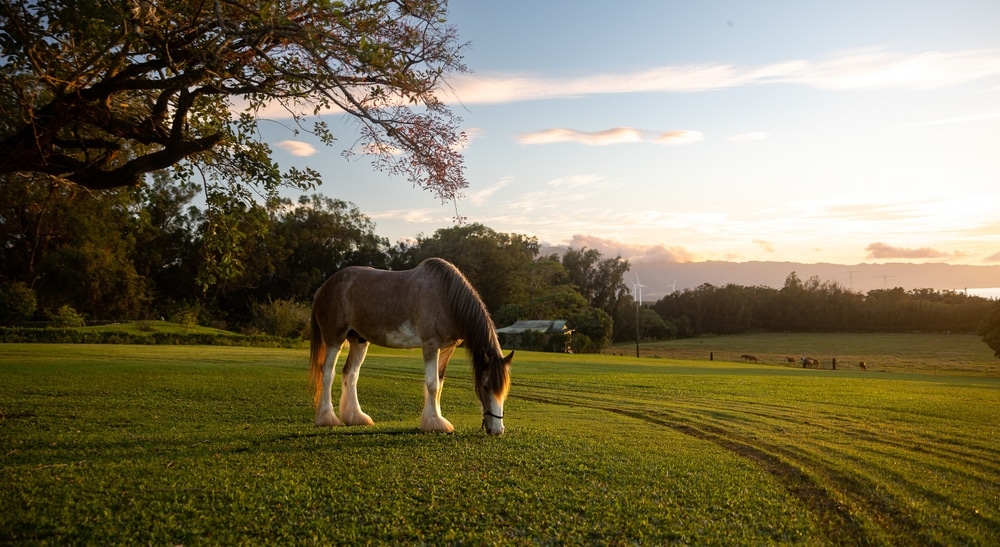
When I was looking for the classic and graceful horse, the feathered legs of Clydesdale caught my attention.
Overview
One kind of draft horse that is well-known for its size, strength, and striking look is the Clydesdale. Most people associate their placid demeanor and feathery legs with them, as they originate from Scotland.
Key Characteristics
- Size: 16 to 18 hands
- Color: Bay with white accents
- Temperament: Patient, kind, and cooperative
Pros
- Profound strength and pulling ability
- Calm and loving nature
- Ideal for demanding tasks and parades
Cons
- It requires a lot of room and food, which means some additional management for these stallion horses.
- They are not as quick or agile as lighter breeds.
- Due to their size, they might be more susceptible to certain health problems.
Thoroughbred Horse
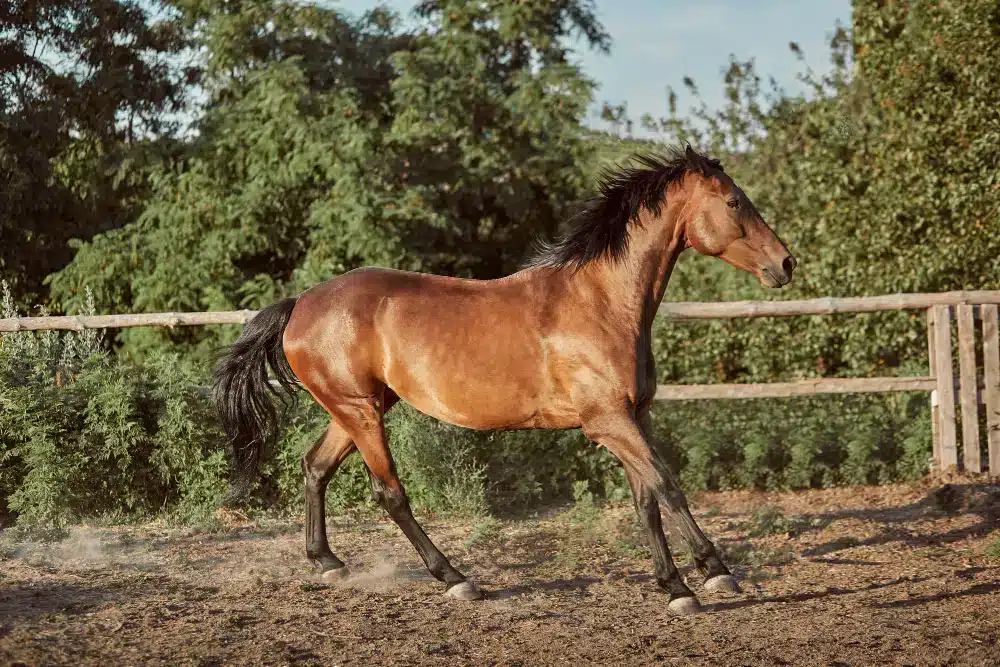
What you need in a stallion horse is the exceptional energy and unique traits that they can pass on to their offspring. This is where thoroughbreds kick in with their unparalleled energy levels and, eventually, performance.
Overview
The Thoroughbred, renowned for its quickness, dexterity, and endurance, is closely associated with horse racing. This quarter stallion horse breed is frequently observed participating in show jumping and racing, among other competitive sports.
Key Characteristics
- Size: 15.2 to 17 hands
- Color: Mostly gray, black, and bay
- Temperament: energetic, intelligent, and competitive
Pros
- Extreme agility and quickness
- Highly responsive and trainable
- Fit for a range of competitive categories
Cons
- Might be more vulnerable to injury from strenuous activity
- Needs extensive proper training and care
- Potentially sensitive in temperament
Andalusian Stallion Horse
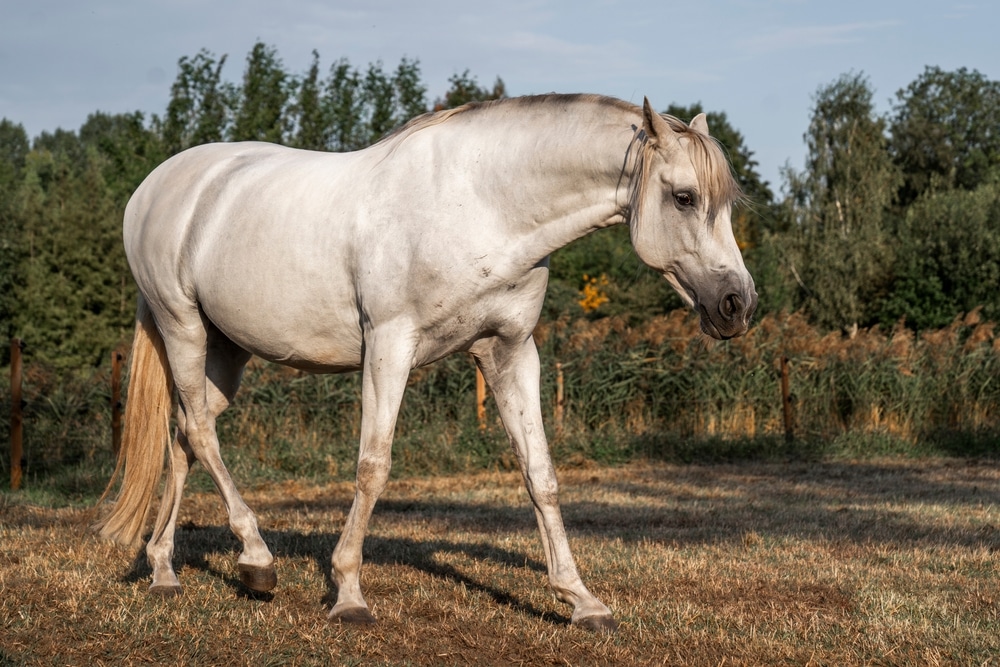
The awe-inspiring beauty of Andalusian stallion horses makes them a great fellow. The flowing mane and the grace of Andalusian horses are what makes them exceptional in the equine world.
Overview
The Iberian Peninsula is home to the graceful, robust, and adaptable Andalusian horse breed. These horses are renowned for their remarkable appearance and have been utilized in classical dressage for a long time.
Key Characteristics
- Size: 15 to 16 hands
- Color: Mostly gray, with touches of bay, black, and chestnut.
- Temperament: Intelligent, honorable, and cooperative
Pros
- Stylish and suitable for dressage
- Robust and adaptable across multiple disciplines
- kind and eager to please
Cons
- Needs regular training and care
- Can be sensitive to schedule changes
- May be more susceptible to certain health problems unique to the breed
Hanoverian Stallion Horse
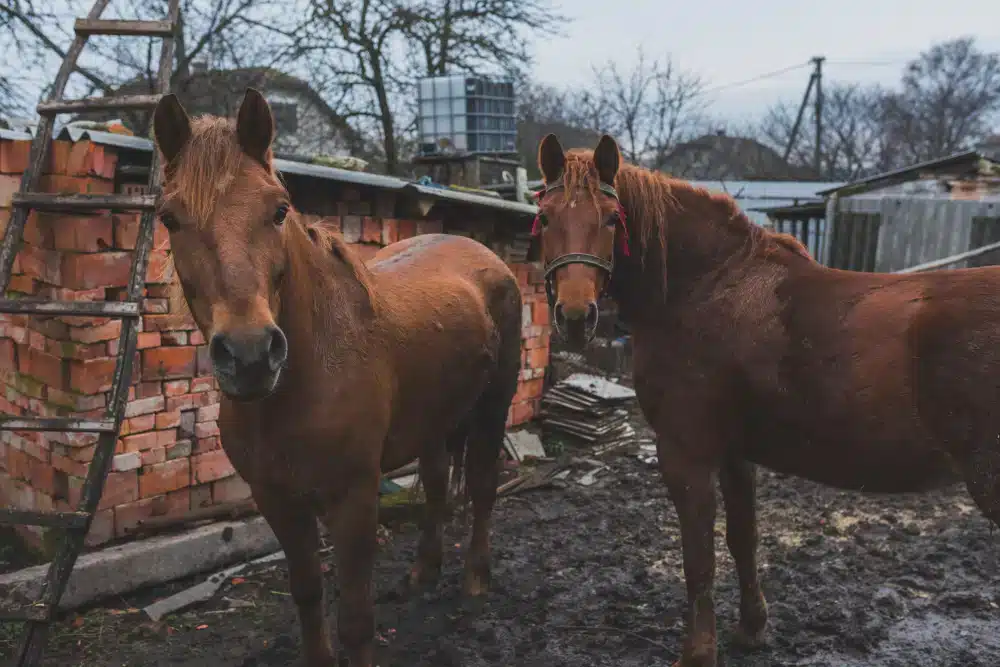
Another good fit for a stallion horse is the Hanoverian breed.
Overview
German warmblood horses of the Hanoverian breed are renowned for their exceptional dressage and show-jumping abilities. They are praised for their exceptional movement, strength, and athleticism.
Key Characteristics
- Size: 16 to 17 hands
- Color: A variety of colors, including black, gray, bay, and chestnut
- Temperament: Quiet, clever, and trainable
Pros
- Outstanding athleticism and mobility
- Adaptable to a variety of horse sports
- A pleasant disposition and trainability
Cons
- Could be costly to buy and maintain
- Requires consistent training and exercise
- Might require special attention to prevent injuries
Percheron Stallion Horse
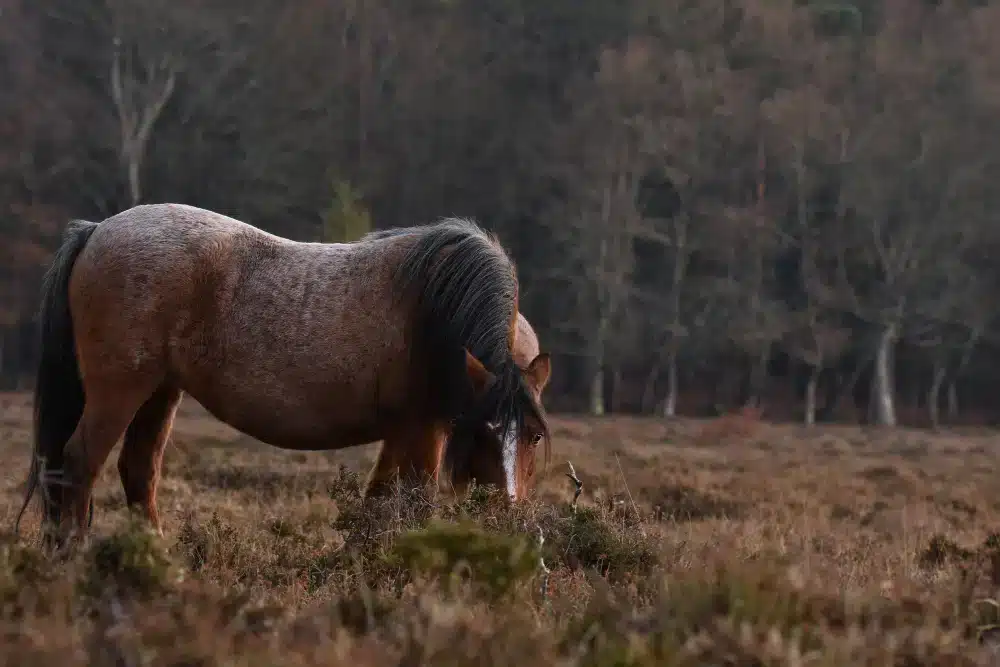
The remarkable build of Percheron makes it stand out among the top breeds of stallion horses.
Overview
Large draft horses from France called Percherons are prized for their power, stamina, and adaptability. They are frequently driven, employed for farm work, and kept as show horses.
Key Characteristics
- Size: 16 to 18 hands
- Color: Mostly gray or black
- Temperament: Pleasant, laid-back, and industrious
Pros
- Excellent strength and endurance for strenuous work
- Kind and manageable
- Fit for both work and exhibition purposes
Cons
- Needs a lot of room and food
- Isn’t as quick or nimble as lighter breeds
- Could be more susceptible to certain size-related health problems
Mustang
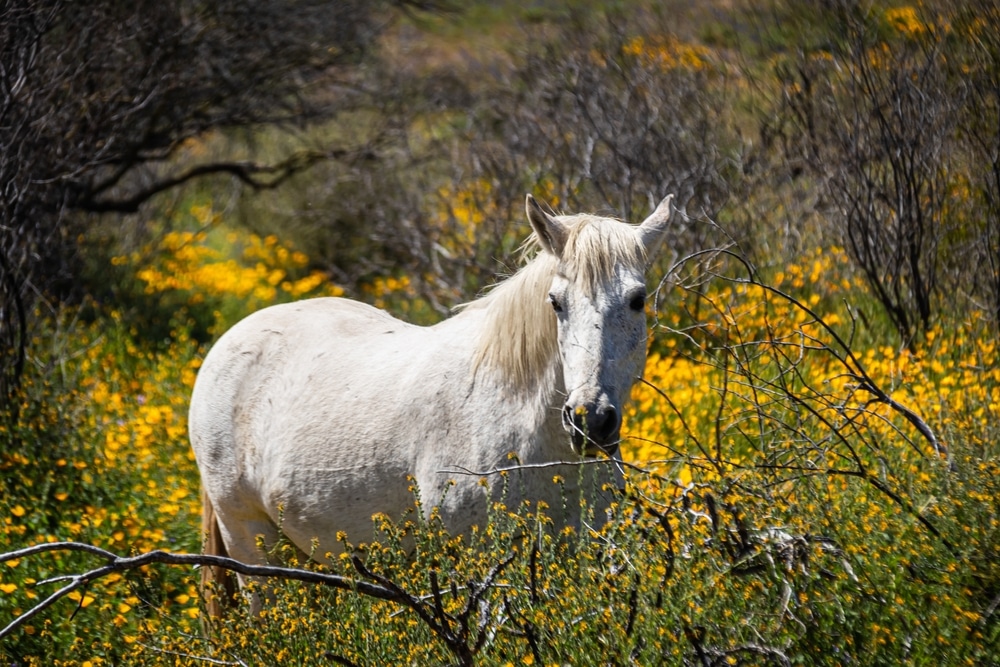
The commanding presence of Mustang might make you get one for the stallion horse breed.
Overview
A wild horse breed, the Mustang is descended from horses that Spanish explorers brought to the Americas. They are renowned for their toughness, dexterity, and environmental adaptability.
Key Characteristics
- Size: 14 to 15 hands
- Colors: Multiple shades of gray, black, chestnut, and bay
- Temperament: Self-reliant, perceptive, and inventive
Pros
- Extremely hardy and adaptive
- Minimal upkeep in the wild
- A special and ancient breed
Cons
- Due to their wild character, they can be tricky to train and handle.
- They could need special handling techniques.
- Domesticating them could be difficult.
Stallion vs. Gelding – Key Differences
Below are the key differences between a stallion and a gelding companion:

Pros and Cons of Owning a Stallion Horse
Below are the pros and cons of owning a stallion horse:
Pros
- Great for breeding and shaping future generations.
- Can excel in training and competitions.
- Strong, striking appearance.
Cons
- Can be territorial and aggressive, needing experienced handling.
- Higher maintenance costs.
- Might face local regulations and safety concerns.
If you want details on stallion horse breeds ranked on the basis of different traits, check out this article.
Conclusion
Summing up, the article covered details on stallion horses, their unique characteristics, and breeds. If you are planning to invest in a great stallion breed, this article is a pathway. Just choose your favorite breed and own a perfect fellow.



